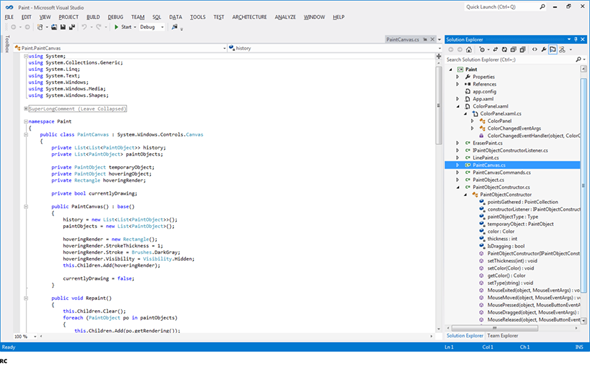

To this software developer, Heinen made a lasting impression on me. And yet, the session was very well received. Candidly, this was nothing short heresy to the FoxPro crowd.
VISUAL STUDIO 2012 CODE
In his keynote, Heinen had sketched a plan about the idea of having a common IDE were the developer could pick his language of choice, that perhaps regardless of language, code would be compiled to some common base. At that time, during the Microsoft FoxPro DevCon in Orlando, Florida, Roger Heinen, then Senior Vice President in Microsoft’s Developer Division, talked about the future.
VISUAL STUDIO 2012 WINDOWS
Rainer represented a watershed moment for Windows developers as the promise of a unified language environment had finally been delivered.įor you history buffs, Microsoft’s unified language strategy dates back to at least October, 1993. It’s hard to believe that 10 years have passed since Visual Studio.

Use looping statements to populate this with multiples of 10. The Solution name and the project name is CSharpCollectionArrayList LOOP Over each row and initialize the SECOND Dimension (10 COLUMNS)įor (int i = 0 i first point). Initialise the second dimension of the array with 10 elements Initialise multi-dimensional array with 10 elements. The Solution name and the project name is CSharpInterfaceDemo Open Visual Studio and create a new C# Console Application.Instantiate an object from the class in code. Modify the values through the propertiesĬonsole.WriteLine(“colour values from inside the ‘myFunction’Ĭreate an Interface and a Class to hold client details.

Check if the sum is greater than 0 then print the operandsĬonsole.WriteLine(“The sum of valueOne: ”, colour1) Calculate the sum of the 2 operands and set it to the ValueTwo = int.Parse(Console.ReadLine()) Prompt the user to enter the second operand ValueOne = int.Parse(Console.ReadLine()) convert it to an integer and set it to the variable Prompt the user to enter the first operand In our case here, when the user enters a non-integer is executed instead of halting the program WHEN an exception is thrown inside the “try” block, try…catch: is used to catch any unexpected behavior


 0 kommentar(er)
0 kommentar(er)
